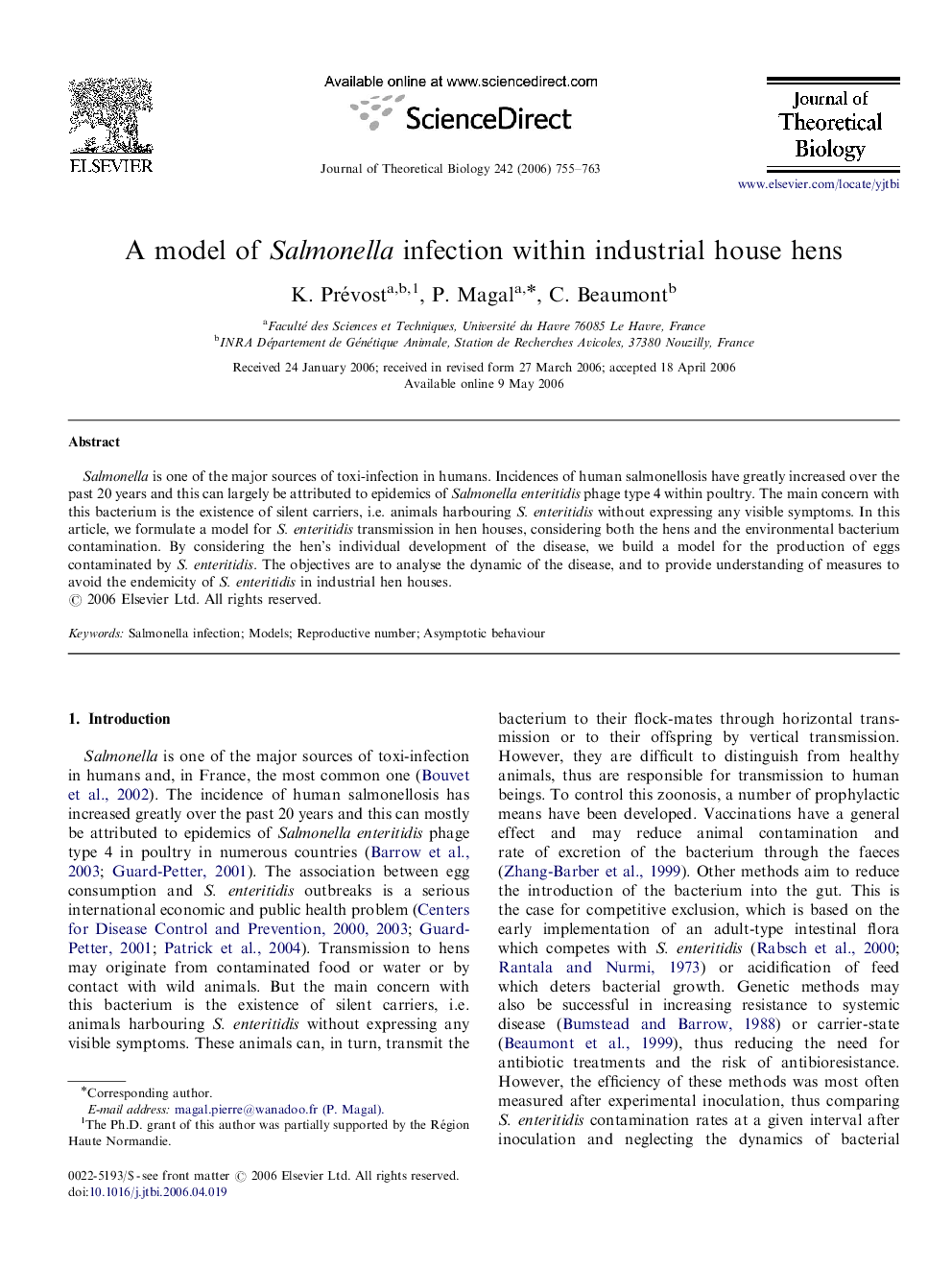| Article ID | Journal | Published Year | Pages | File Type |
|---|---|---|---|---|
| 6371757 | Journal of Theoretical Biology | 2006 | 9 Pages |
Abstract
Salmonella is one of the major sources of toxi-infection in humans. Incidences of human salmonellosis have greatly increased over the past 20 years and this can largely be attributed to epidemics of Salmonella enteritidis phage type 4 within poultry. The main concern with this bacterium is the existence of silent carriers, i.e. animals harbouring S. enteritidis without expressing any visible symptoms. In this article, we formulate a model for S. enteritidis transmission in hen houses, considering both the hens and the environmental bacterium contamination. By considering the hen's individual development of the disease, we build a model for the production of eggs contaminated by S. enteritidis. The objectives are to analyse the dynamic of the disease, and to provide understanding of measures to avoid the endemicity of S. enteritidis in industrial hen houses.
Related Topics
Life Sciences
Agricultural and Biological Sciences
Agricultural and Biological Sciences (General)
Authors
K. Prévost, P. Magal, C. Beaumont,
